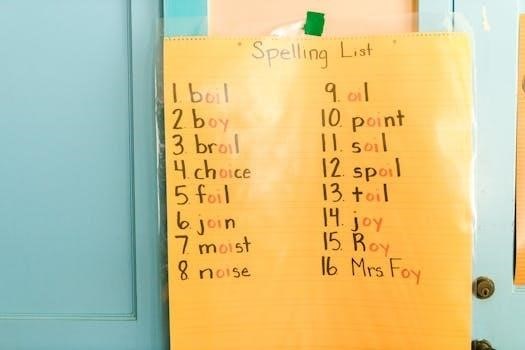What are 1st Grade Vocabulary Words?
First grade vocabulary words are commonly encountered words that students should be able to recognize instantly. These words are often divided into lists, such as Dolch and Fry, assisting young learners in reading fluency and comprehension. Mastering these words is a key component of early literacy development.
Defining 1st Grade Sight Words
First grade sight words are high-frequency words that students should recognize automatically, without needing to sound them out. These words are fundamental to early reading success, and they are often found in the texts that first-graders encounter. Unlike some words that can be decoded phonetically, sight words often don’t follow typical phonetic patterns, making memorization the key to recognition. These words are also referred to as high-frequency words, as they appear very often in reading materials. They are not necessarily the most complex words but are those that occur most often. The ability to quickly identify sight words allows young readers to focus on comprehension and meaning rather than getting bogged down in decoding each word. This ability to immediately recognize sight words is crucial for reading fluency and overall reading enjoyment, making it a vital component of a first-grade literacy curriculum. Various resources, including printable PDFs, offer these crucial sight word lists.

Importance of Sight Word Mastery
Mastering sight words is crucial for first-grade students as it directly impacts their reading fluency and comprehension. When a child can recognize sight words instantly, they can focus more on understanding the meaning of the text rather than struggling to decode individual words. This ease in reading allows for smoother and more enjoyable reading experiences, which are essential for fostering a love of reading from an early age. Proficiency in sight words also builds confidence in young readers, encouraging them to tackle more complex texts. The automatic recognition of these high-frequency words frees up cognitive resources, allowing students to concentrate on the story and its underlying themes. Additionally, mastering sight words is a foundational step toward becoming a proficient and independent reader, laying the groundwork for future academic success. It’s the key to unlocking the door to reading for pleasure and learning across all subjects.

Common 1st Grade Sight Word Lists
Several established lists guide first-grade sight word instruction, including the popular Dolch and Fry lists. These lists provide a structured approach to learning high-frequency words that are essential for early reading success.
Dolch First Grade Sight Words
The Dolch list, a foundational resource in early reading education, includes specifically targeted for first-grade students. These words are considered high-frequency, meaning they appear often in texts that young children encounter. The Dolch list is designed to support reading fluency, as mastering these words enables students to focus more on comprehension rather than decoding each individual word. The list contains words such as “after,” “again,” “an,” “any,” “as,” “ask,” “by,” “could,” “every,” “fly,” “from,” “give,” “going,” “had,” “has,” “her,” “him,” “his,” “how,” “just,” “know,” “let,” “live,” “may,” “of,” “old,” “once,” “open,” “over,” “put,” “round,” “some,” “stop,” “take,” “thank,” “them,” “then,” “think,” “walk,” “were,” and “when.” These words often don’t follow typical phonetic rules, so memorization through sight is key. The Dolch list is commonly used in classrooms and homes to support children’s reading journeys, and the availability of PDF versions facilitates easy access and practice.
Fry First Grade Sight Words
The Fry sight word list is another valuable resource for first-grade vocabulary development. This list is based on the most frequently used words in printed English, with the first being a priority for early readers. The Fry list includes words like “the,” “of,” “and,” “a,” “to,” “in,” “is,” “you,” “that,” “it,” “he,” “was,” “for,” “on,” “are,” “as,” “with,” “his,” “they,” “I,” “at,” “be,” “this,” “have,” “from,” or,” and many more. Mastering these words ensures that students can read common text with greater ease and speed. The Fry list is often divided into sets of words to help with gradual learning. Like the Dolch list, the Fry words are often made available in PDF format, making it easy for teachers and parents to access and use. By focusing on the Fry list, first-graders build a strong foundation for reading comprehension and fluency.
Combining Dolch and Fry Lists
Combining the Dolch and Fry sight word lists can create a more robust vocabulary for first-grade students. Many words overlap between these lists, which reinforces learning, but each list also contains unique words. Teachers and parents can create custom lists that include words from both, ensuring a comprehensive sight word curriculum. By merging these lists, you can address a wider range of high-frequency words, providing a stronger foundation in reading. These combined lists are often used to create more challenging practice exercises and activities. This approach is effective in helping students recognize a larger variety of words automatically. Using combined lists also allows for flexibility in curriculum design and personalized learning plans. Many resources offer combined list in downloadable PDF formats, simplifying the process of integrating these words into daily practice. This method helps students become more proficient readers by expanding their sight vocabulary.

Resources for 1st Grade Vocabulary
There are numerous resources available for 1st grade vocabulary, including printable PDF lists, online games, and engaging activities. These resources help make learning sight words fun, accessible, and effective for young learners.
Printable PDF Lists for 1st Grade
Printable PDF lists are a valuable resource for 1st grade vocabulary development, providing a tangible way for students to engage with sight words. These lists often include words from the Dolch and Fry lists, or a combination of both, categorized by grade level or frequency of use. Many educators and parents find these downloadable PDFs incredibly convenient as they can be easily accessed, printed, and used for various learning activities, at home or in the classroom. The availability of these lists in PDF format simplifies the process of distributing learning materials, ensuring every student has equal access to essential sight words. Furthermore, the PDF format guarantees that the lists are displayed correctly across different devices and printers, maintaining a consistent and user-friendly experience. These printable lists often include clear and large font sizes making it easier for young children to read and recognize the words, thus supporting their reading skills development. The lists are also a great tool for tracking progress and implementing a structured learning approach. Some PDF lists also include additional features such as blank spaces for writing or coloring the words, making it an interactive learning experience for kids.
Online Sight Word Games for 1st Grade
Online sight word games provide an engaging and interactive way for first graders to practice vocabulary. These games often feature colorful graphics, animations, and audio cues to make learning fun and accessible. Many platforms offer a variety of games, from matching and memory activities to timed word recognition challenges, catering to different learning styles and preferences. These online resources are particularly beneficial as they provide immediate feedback, helping students identify and correct their mistakes promptly. The gamified approach also increases motivation and engagement, encouraging consistent practice. These games are often designed to be self-paced, allowing children to progress at their own speed and build confidence. Furthermore, online sight word games are accessible from various devices, such as computers, tablets, and smartphones, making it easier for students to practice at school, at home, or on the go. The use of technology in education also enhances digital literacy skills in children. These games also often track progress, giving parents and teachers valuable insight into a student’s learning.
Sight Word Activities for 1st Grade
Sight word activities for first graders are crucial for reinforcing vocabulary learning through hands-on engagement. These activities can range from simple tasks like word searches and bingo to more creative approaches such as building words with blocks or using playdough. Incorporating movement into learning, like “sight word hopscotch” or action-based games, can also make the process more enjoyable and memorable. Another fun activity involves creating sight word sentences or stories, which helps students understand the words in context. Craft projects, where children decorate or illustrate their sight words, can also enhance retention. These varied activities cater to different learning preferences, ensuring that all students have opportunities to engage with the material in a meaningful way; The use of flashcards can also be incorporated into games, such as “go fish” or “memory match”. Collaborative activities, where students work together to practice sight words, promotes peer learning. These activities are all designed to improve reading fluency and confidence, while making learning enjoyable.

How to Use 1st Grade Vocabulary Lists
First grade vocabulary lists are best utilized through consistent practice and varied methods. Integrating these words into daily reading routines and games can significantly improve fluency and comprehension skills for young learners.
Integrating Sight Words into Reading Practice
Integrating sight words into reading practice is crucial for developing fluency in first graders. Start by ensuring that the 1st grade vocabulary words are included within the texts children are reading. Focus on repetitive exposure within sentences and short stories so that children can recognize these words automatically. Encourage children to point to each word as they read, reinforcing the visual memory. It’s beneficial to use reading materials that are appropriately leveled, allowing for a balanced challenge between known and new words. Make sure to incorporate high-frequency words from lists like Dolch and Fry. Repeated readings of familiar texts can also improve the recognition of these important words. This approach helps children develop a sense of confidence and improves reading speed. Furthermore, using interactive reading tools and apps can keep the practice interesting and engaging while ensuring consistent exposure to common words. Remember, consistent exposure and practice are key to automatic recognition.
Strategies for Memorizing Sight Words
Several effective strategies can aid first graders in memorizing sight words. A multi-sensory approach is highly beneficial, combining visual, auditory, and kinesthetic learning. Use flashcards and encourage children to say each word aloud, then trace it with their finger. Creating simple sentences with the sight words helps in contextual understanding and application. Games like memory match or bingo using sight words can make learning more enjoyable. Consistent, short practice sessions are more effective than infrequent, longer ones. Incorporate the words into daily activities; for example, point out sight words on signs or in books. Chanting or singing songs that include sight words can also aid in memorization. Moreover, using visual aids like word walls or colorful posters can serve as constant reminders. Always celebrate small successes to keep learners motivated. Remember, patience and consistent practice are vital for mastering first grade sight word lists. The key is to make the learning process fun and engaging.
Using Flashcards Effectively for 1st Grade
Flashcards are a valuable tool for teaching sight words to first graders, but their effectiveness hinges on proper usage. Start by introducing a small set of words, gradually adding more as mastery progresses. Show each flashcard clearly, saying the word aloud, and have the child repeat it. Include the word in a simple sentence to provide context. Encourage active participation by having the child trace the word with their finger. Use flashcards in various games, like matching or speed reading, to keep learning engaging. Shuffle the deck frequently to avoid rote memorization. Review previously learned words regularly to reinforce memory. Keep flashcard sessions brief and fun. For extra practice, create flashcards for home use as well. Colorful and visually appealing flashcards often help maintain a child’s attention and motivation. Remember to celebrate every success, no matter how small, to foster a positive learning attitude. The key to effective flashcard use is consistency and active engagement.
